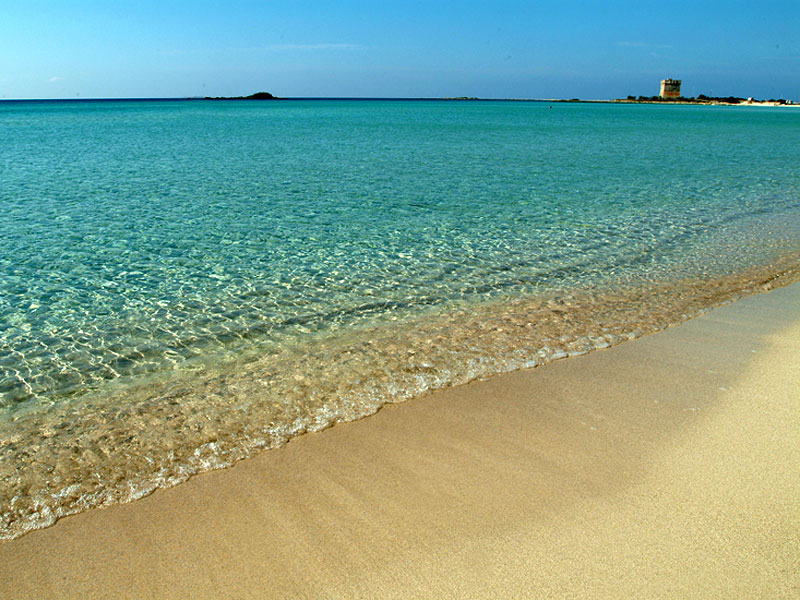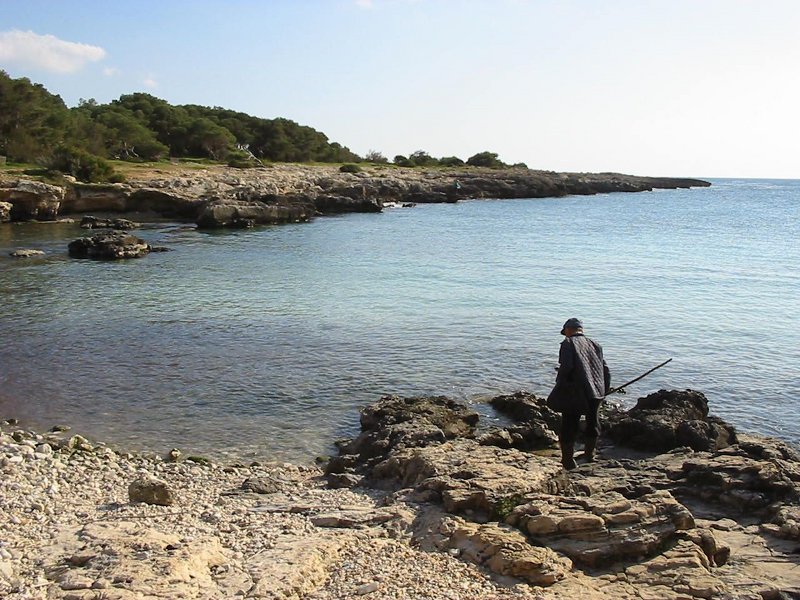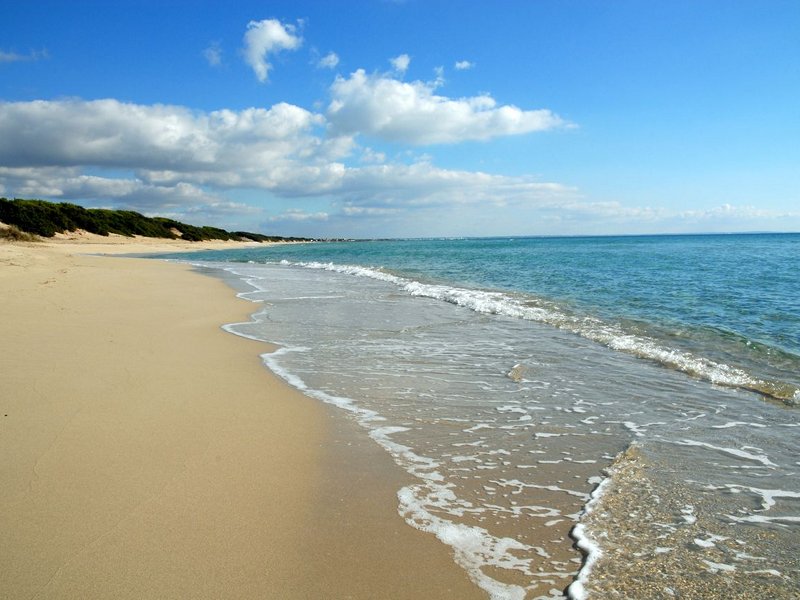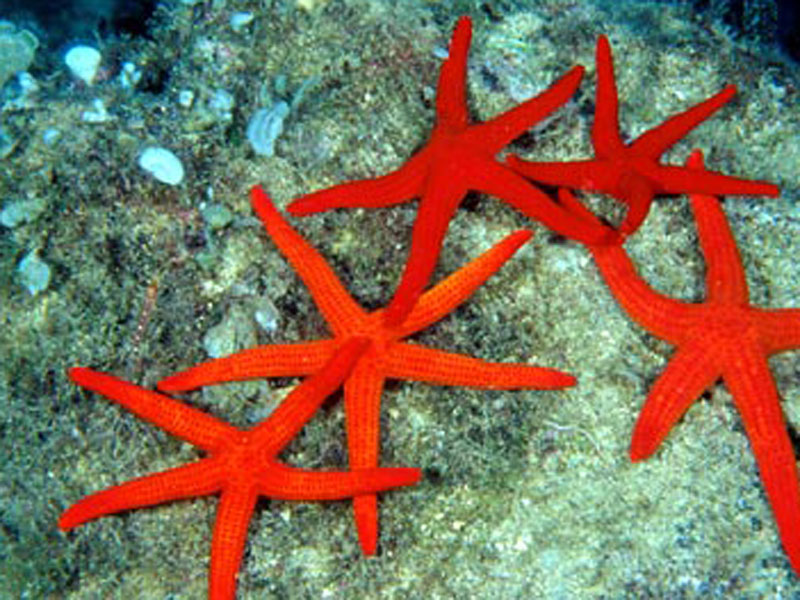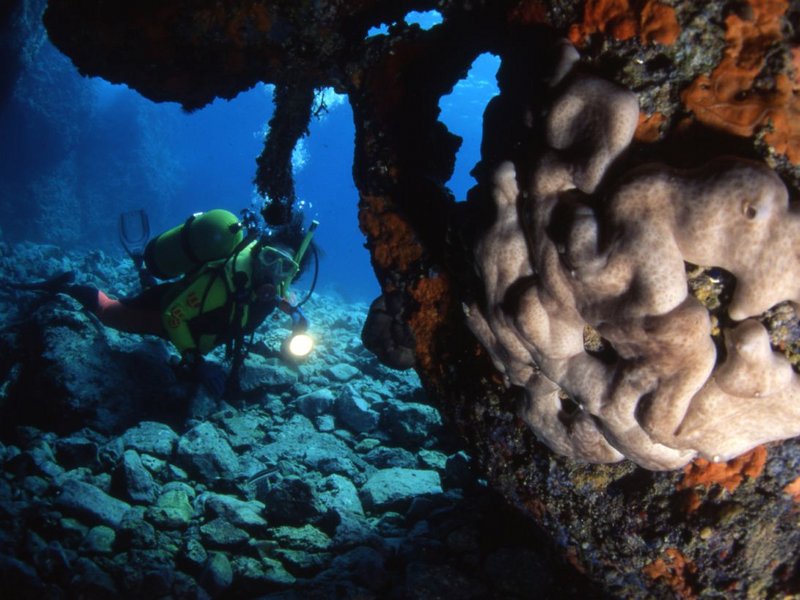Area Marina Protetta Porto Cesareo
www.ampportocesareo.itProtected Area
Identity Card
- Sea Surface Area: 16'654.00 ha
- Regions: Puglia
- Provinces: Lecce
- Municipalities: Nardò, Porto Cesareo
- Establishment Measures: D.M. AMB 12/12/1997
- PA Official List: EUAP0950
- Park Authority: Consorzio di Gestione Area Marina Protetta Porto Cesareo
![]() Statute of the Consortium Porto Cesareo Marine Protected Area (PDF - 706Kb)
Statute of the Consortium Porto Cesareo Marine Protected Area (PDF - 706Kb)
![]() Regulations Porto Cesareo MPA G.U. no. 1 of 02/01/2010 (PDF - 7.2Mb)
Regulations Porto Cesareo MPA G.U. no. 1 of 02/01/2010 (PDF - 7.2Mb)
Porto Cesareo Marine Protected Area
Thanks to its "natural port" facing Isola Grande, also called Isola dei Conigli, Porto Cesareo is one of the most beautiful places of the coast of Salento. It lies only 500 m far from the coast and is covered by a thick Aleppo pine and acacia wood planted by the foresters about 40 years ago. The seabed is characterized by a sub-tropical environment with very particular animal associations typical of the warm seas. Thanks to the presence of madrepores, it is possible to find coralligenous formations at low depths and not far from the coast. It is also possible to find multicolored nudibranches and the gastropod "Mitra zonata", whose dark shell with light brown stripes is very sought-after and considered a real rarity by collectors. The coast of Porto Cesareo reserve is very indented and varied: from the calcareous flat areas of the terraces to the beaches, where the coastal dune houses a thick shrub vegetation among gulfs, inlets, rocky spurs, crags, and aits. The integrity of the seabed is witnessed by the recent sight of some young specimens of Caretta caretta, which is by now a rarity in the Italian peninsula.
Further information (Italian text)
The Habitats
The benthic populations living on the seabed of Porto Cesareo MPA have been described in a detailed mapping study carried out between Torre Lapillo and Torre Squillace, promoted by an agreement between the University of Lecce and the Municipality of Porto Cesareo. According to this study, there are at least 10 different habitat typologies (Map of Biocenoses) in the stretch of sea in front of the reserve. Among them, the habitats including Posidonia oceanica, the coralligenous formations, and the cave environments are worth a mention.
Further information (Italian text)
Geological Features
The coast of "Porto Cesareo" marine protected area still preserves some stretches enabling a correct assessment of the natural evolution of the area. Such features have favored the development of environmental dynamics studies to the extent that, already in 1971, Professor Pietro Parenzan had urged the competent authorities to safeguard these stretches of coast where the bars of very high dunes, the back salt pans, and the particular collapses of the karstic soil, called "spunnulate", still house a luxuriant natural vegetation.
The Immortal Jellyfish
Along the coasts of "Porto Cesareo" marine protected area, the biologists from Istituto Talassografico "A. Cerreti"/CNR of Taranto and the University of Lecce have recently discovered the one and only known organism able to invert its own biological cycle and avoid the final stage of the ageing process: death.
Marine Environment
A particular feature of this stretch of the Ionian Sea is represented by the abundant and multicolored coralligenous formations Prof. Parenzan was attracted by: he highlighted their biodiversity with a list of the species living in the area and caught during fishing activities. The first scuba divers were also attracted by them: they described the luxuriance of the seabed where the presence of seaweed, sponges, and anthozoans form a multicolored whole and one of the most beautiful settings of our sea; the beauty of these settings is at its apex when the rays of the sun penetrate the dozens of marine caves present in the area.
Further information (Italian text)
The Marine Caves
Given the karstic nature of the region, the presence of submerged caves is very frequent along the coasts of Salento; the researchers of the Marine Biology Station of Porto Cesareo and the diving speleologists of Neretino Speleological Group of Nardò, have found out and described 53 submerged caves which represent only a few of the submerged cavities along the coasts of Salento.
The Date Mussels
The establishment of the marine protected area has highlighted the problems linked to the safeguard and protection of the marine environment, focusing on the often almost irreversible damages caused in the last decades by illegal fishing; without a doubt, the damages caused to the crags by the indiscriminate gathering of date mussels are among the most evident ones.
Further information (Italian text)



